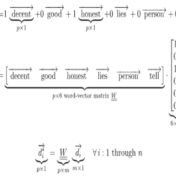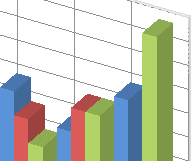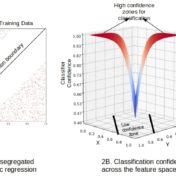Tag Archives: Classification
Concept Drift and Model Decay in Machine Learning

Concept drift is a drift of labels with time for the essentially the same data. It leads to the divergence of decision boundary for new data from that of a model built from earlier data/labels. Scoring randomly sampled new data can detect the drift allowing us to trigger the expensive re-label/re-train tasks on an as needed basis…
Logistic Regression as a Nonlinear Classifier
Word Embeddings and Document Vectors: Part 2. Classification

In the previous post Word Embeddings and Document Vectors: Part 1. Similarity we laid the groundwork for using bag-of-words based document vectors in conjunction with word embeddings (pre-trained or custom-trained) for computing document similarity, as a precursor to classification. It seemed that document+word vectors were better at picking up on similarities… Read more »
Word Embeddings and Document Vectors: Part 1. Similarity

Classification hinges on the notion of similarity. This similarity can be as simple as a categorical feature value such as the color or shape of the objects we are classifying, or a more complex function of all categorical and/or continuous feature values that these objects possess. Documents can be classified… Read more »
Naive Bayes Classifier: Part 2. Characterization and Evaluation

Closed-form solutions are sweet. No hand-wringing/waving required to make a point. Given the assumptions, the model predictions are exact so we can readily evaluate the impact of assumptions. And, we get the means to evaluate alternate (e.g. numerical) approaches applied to these same limiting cases with the exact solution. We are… Read more »
Naive Bayes Classifier: A Geometric Analysis of the Naivete. Part 1

The curse of dimensionality is the bane of all classification problems. What is the curse of dimensionality? As the number of features (dimensions) increase linearly, the amount of training data required for classification increases exponentially. If the classification is determined by a single feature we need a-priori classification data over… Read more »


